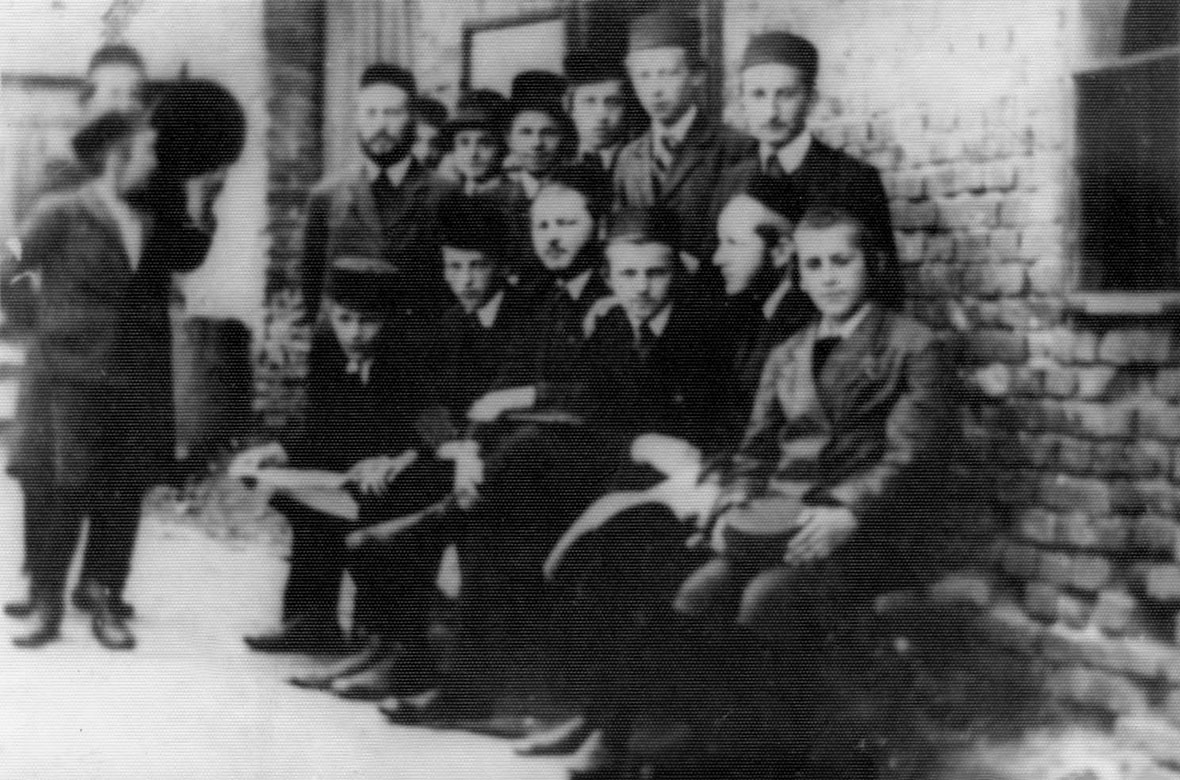Religious Life in Trzebinia Before the Holocaust
In the interwar years, Trzebinia was a cultural and spiritual center. Although it was a small town, it had four synagogues, a Bikur Cholim society (for helping the sick), a burial society, a charitable society, a women’s association, a cheder (religious primary school), yeshivot (Talmudic academies) and shteiblech (prayer houses).
In 1921 a “Talmud Torah” was established in a modified cheder, with five classes, six teachers and 112 pupils. The Talmud Torah was supported by the American “Ezrat Torah” Organization. During the Great Economic Crisis (1929-1931), the women’s association set up a local soup kitchen, mostly serving destitute children. The economic condition of the residents improved slightly with the establishment of the court of the Bobover Rebbe, Rabbi Ben Zion bar Shlomo Halberstam, who had taken over the leadership of his sect in 1905 from his father, the founder of the dynasty. Rabbi Ben Zion resided in Trzebinia from 1932-1937, and thousands of his disciples streamed to his court, mostly on the Sabbath and festival days. Many of the town’s residents, including those who lived there during those years, made their livelihood through their proximity to the court of the Rebbe.
In 1918, Rabbi Dov-Berish Weidenfeld, author of Dovev Meisharim, came to live in Trzebinia. He was appointed town rabbi in 1923, and he established the “Kochav Miyaakov” Yeshiva, which produced many outstanding scholars. As head of the Beit Din (rabbinical court), Rabbi Dov-Berish greatly elevated the standing of the community. He was considered one of the rabbinic world’s best-known gaonei hador (religious giants of his generation). During WWII, Rabbi Dov-Berish fled to Lwów; from there he was exiled to Siberia. In 1946 he arrived in Eretz Israel, where he reestablished his Kochav Miyaakov Yeshiva (he passed away in 1965).
Among Rabbi Dov-Berish’s disciples was Rabbi Akiva Bar Yehezkiel Gross, who received his rabbinical ordination from his Rebbe. A Radomsk Chassid, Rabbi Akiva established another yeshiva in Trzebinia called “Keter Torah,” where he gave lessons. After WWII, he served as rabbi of Galicia and Dzierzoniów. He emigrated to Israel in 1949, where he became rabbi of the Bik’a neighborhood in Jerusalem (he passed away in 1966).




